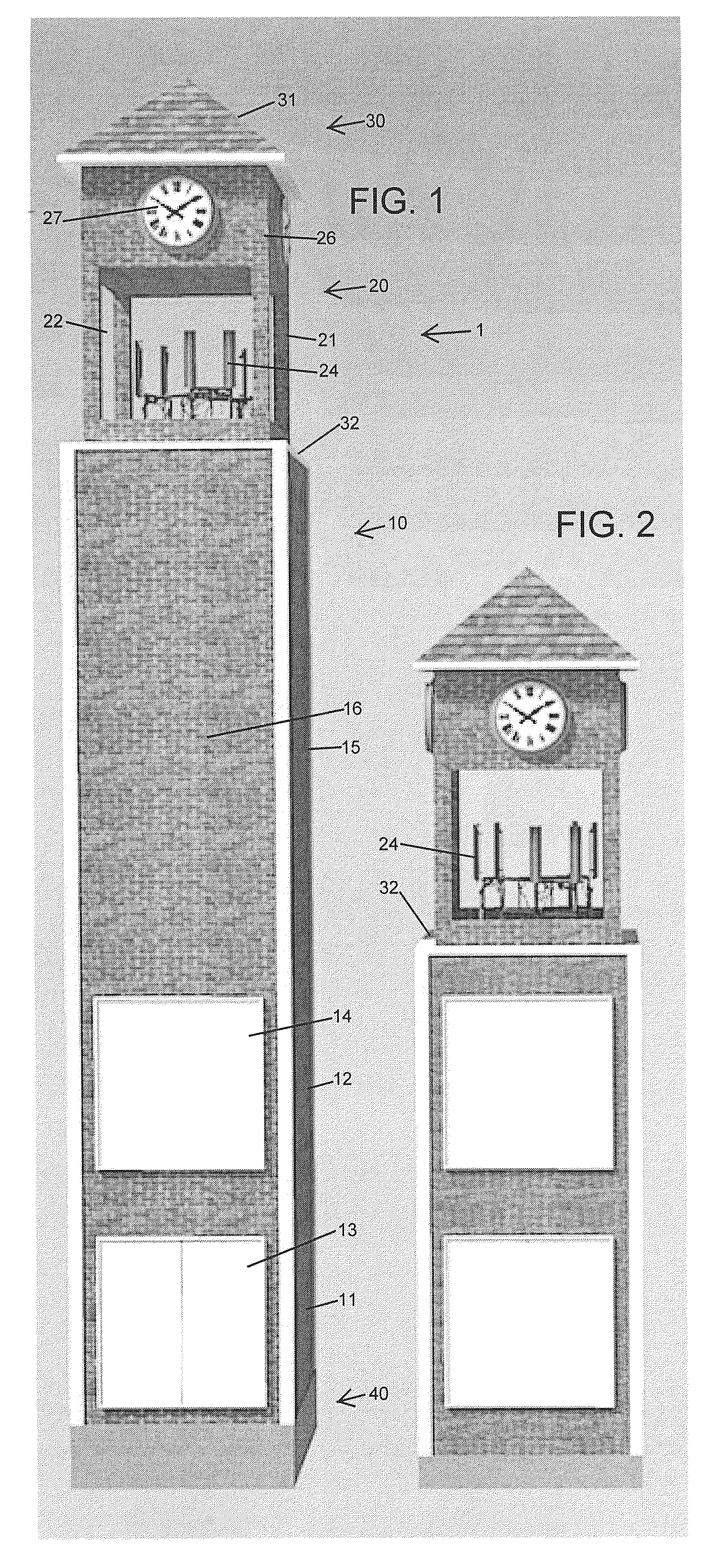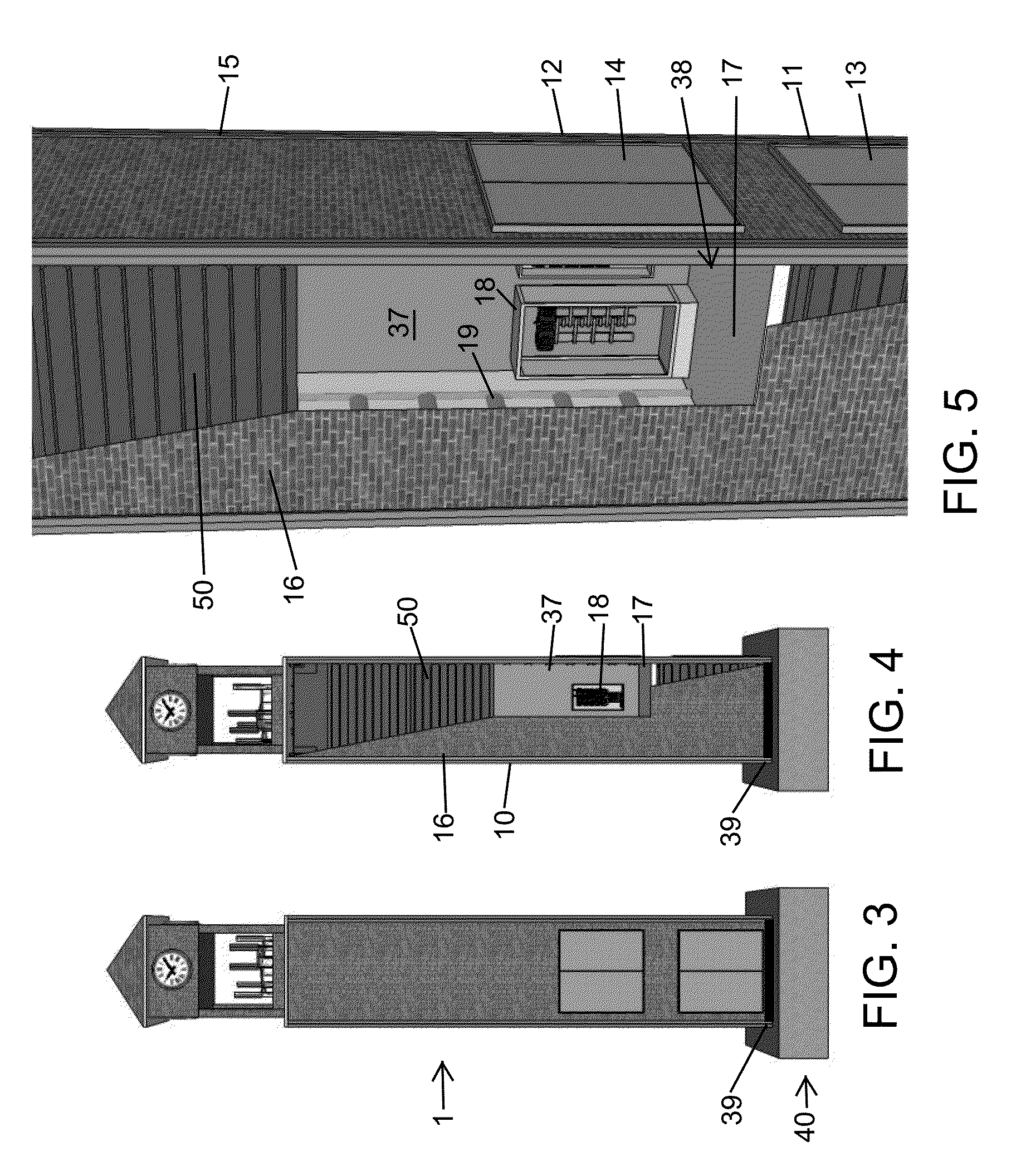Cellular antenna tower and equipment enclosure based on shipping container
a technology of equipment enclosure and antenna tower, which is applied in the direction of collapsible antenna means, parking, building repairs, etc., can solve the problems of conventional cell towers, towers installed in their neighborhoods, and unwillingness of building and land owners to lease the required space, so as to achieve convenient and cost-effective exterior cladding, increase the height, and the effect of increasing stability
- Summary
- Abstract
- Description
- Claims
- Application Information
AI Technical Summary
Benefits of technology
Problems solved by technology
Method used
Image
Examples
Embodiment Construction
[0043]As shown in FIG. 1, for example, a cell site structure or antenna tower structure 1 according to the invention generally includes a tower 10 mounted on a foundation 40, and carrying an antenna cupola 20 on top of the tower 10. The antenna cupola 20 includes a cupola frame structure 21 that is preferably constructed of non-metallic materials, and most preferably completely of composite materials, so that the cupola frame structure 21 does not cause any reflection, blocking, interference or other degradation of the wireless signals of one or more antennas 24 mounted in at least one antenna stage 22 of the antenna cupola 20. This single antenna stage or first antenna stage 22 has large openings respectively between four cupola legs of the frame 21 at the corners forming the perimeter of the cupola, to provide unobstructed beam patterns, preferably in all four directions, for the antennas 24 forming one or more rad centers in the antenna stage 22. The antennas 24 may be any type o...
PUM
 Login to View More
Login to View More Abstract
Description
Claims
Application Information
 Login to View More
Login to View More - R&D
- Intellectual Property
- Life Sciences
- Materials
- Tech Scout
- Unparalleled Data Quality
- Higher Quality Content
- 60% Fewer Hallucinations
Browse by: Latest US Patents, China's latest patents, Technical Efficacy Thesaurus, Application Domain, Technology Topic, Popular Technical Reports.
© 2025 PatSnap. All rights reserved.Legal|Privacy policy|Modern Slavery Act Transparency Statement|Sitemap|About US| Contact US: help@patsnap.com



